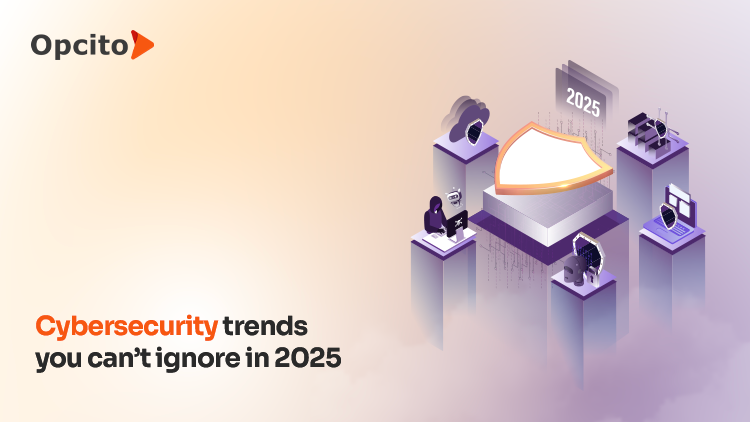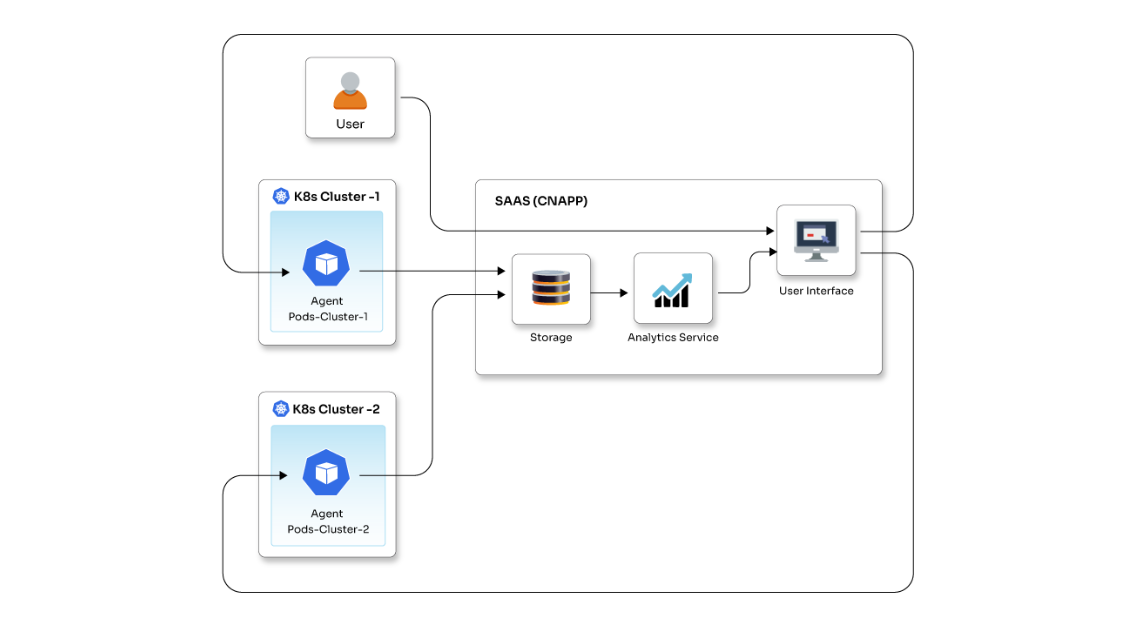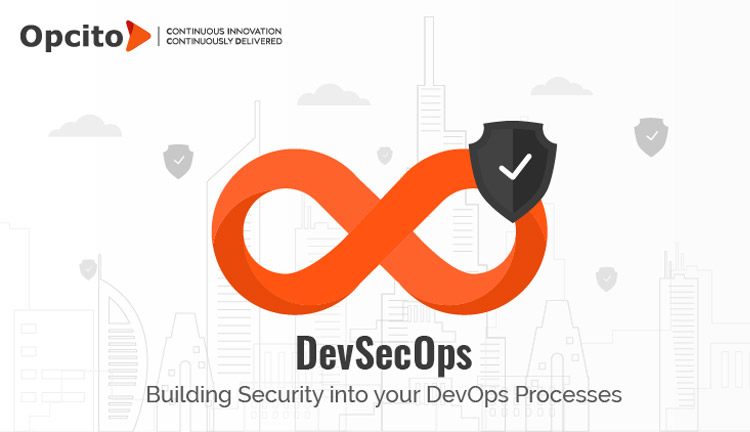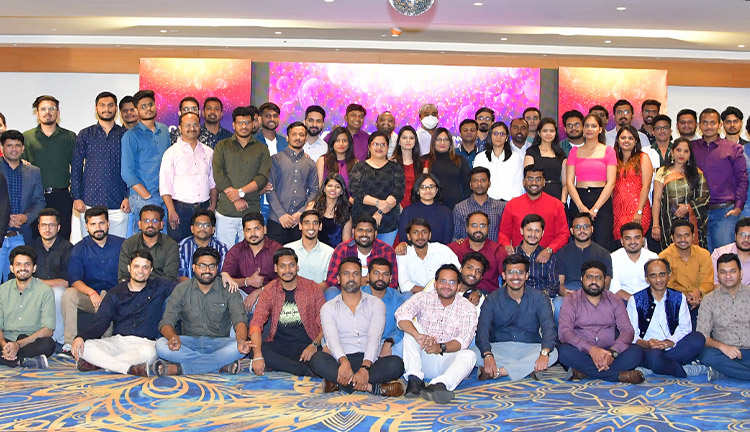The cloud expenditure forecasts are always filled with mind-boggling numbers. An IDC report suggests the whole cloud spending to reach $1.3 trillion by 2025. Although the report includes the entire cloud, which means all cloud-related expenses such as hardware, software, all the as-a-service models, and services, the number is still huge. These vast numbers also mean increased demand for service expertise on the cloud. Migration and security services will be critical challenges. More than 85% of organizations today say security is their primary focus. Cloud providers, too, are monitoring this trend closely, with Google spending $5.4 billion to acquire cybersecurity and threat intelligence services company Mandiant.
Increasing investments in security firms and cutting-edge technology work around security measures have instilled trust and have led SMBs to place nearly two-thirds of their data on the cloud. All this means that organizations have already begun actively migrating to the cloud. The security assurance from cloud providers has truly boosted how organizations perceive the cloud compared to ten years ago. However, this is not enough. Organizations must do much more to ensure a safe framework, primarily when using multiple systems to manage their data. They must assess blind spots and loopholes, define policies, and fill security gaps, especially when moving applications between cloud environments.
Overlooking security can be your costliest mistake
Adopting cloud services is a simple process with the right partner. Even though it involves complex steps, cloud-based infrastructure development is much simpler than building a physical environment. But sometimes, it can be deceptive. Unfortunately, many organizations rush into a new cloud solution and pay the price for not carefully considering the security challenges. They fall prey to unknown attack vectors, unknowingly open avenues for cloud-based threats, overlook compliance considerations and pay hefty fines due to compliance issues. Here are some of the common security challenges in cloud migration:
- Data exposure and loss: Data may be stored all over the place in legacy systems. Moving all the data from legacy systems to the cloud may not always be possible. There are high chances of data getting lost during transit with poorly configured APIs, access control mistakes, and lack of encryption.
- Misconfiguration, wrong set-up, and insecure interfaces: A misconfigured system is an invitation to vulnerabilities. A lack of testing and streamlining can often overlook unpatched areas, leading to insecure APIs. API breaches are huge attack vectors and are becoming increasingly common.
- Unauthorized access and poor IAM: It could be challenging to identify and separate roles and access privileges, particularly in large and multi-cloud scenarios. Weak or improperly applied identity policies & permissions, administrative console access, authentication requirements, and porous network access controls add to the vulnerability.
- Accidental errors: Employees could make errors that could cause data to get corrupted, erased, or exposed. Mishandling or unintentionally sharing files can pose a severe threat.
- Lack of monitoring and plane visibility: With the dynamic pace that the system and data are introduced to during migration and in cloud processes, it is reasonably possible to struggle with monitoring all the processes and environments.
- Regulatory compliance violations: Handling sensitive information needs to be compliant with local, national, and international government regulations. Non-compliance may lead to huge fines, failed audits, legal ramifications, and, ultimately, loss of customer trust.
- Lack of skills and resources: Many small and medium-sized organizations face a lack of skilled personnel due to budget constraints, especially in areas like DevOps and SREs. A lack of resources with technical knowledge is bound to slow down the cloud migration journey and, in some cases, cause a security challenge.
Migrating to the cloud securely & successfully
A carefully crafted cloud migration strategy is crucial to ensure the smooth transitioning of servers, applications, data, and infrastructure. A well-prepared plan helps in keeping security loopholes and overhead costs at bay. It is essential to understand that migrating requires clear communication between SecOps & Development teams and the business. Lack of clear communication, planning, and discussion of related threats can lead to organizations facing various risks like cloud malware injection, accidental errors, API attacks, malware and ransomware attacks, compliance violation, web application exploitation, distributed denial of service, and account or service hijacking.
A successful cloud migration strategy is incomplete without an end-to-end security framework that covers the entire cloud or multi-cloud infrastructure. It is easy to feel overwhelmed while making big moves and migrating to the cloud. A lot of questions may arise, and that's a good sign. Opcito's whitepaper Cloud Migration: Questions to Answer Before You Migrate addresses some fundamental questions that organizations have before migrating. There are a few more vital things to consider, such as:
- Data to encrypt during transmission and how to do that
- Current and future security posture and its impact on business goals
- Protecting access to APIs and GUIs
- Procedures and policies before and after migration
- A thorough gap analysis of the security paradigm
- Risk management and disaster recovery plans
Once you have figured these things out, the critical question arises of the level of technical support required, cloud providers' offerings, expertise needed, and what to outsource. Every organization needs to have a clear vision for the strategy, implementation path & resources.
There is more to a secured cloud migration strategy. Let's see some of the vital considerations while chalking out your plan.
Analyze your stack, accesses, automation, and SecOps
Conduct a thorough security audit around your tech stack, accesses, user permissions, and security operations from the security perspective, especially from the migration point of view. Analyze how you manage and grant user access while migrating. Introducing privileged access control for DevSecOps teams, SREs, and architects could be a good choice. This will help smooth migration and raise red flags and shortcomings that may arise during migration. It is advisable to rely on service providers' APIs and have specialized tools and services that can help streamline and integrate security automation customized. Security during migration involves more than just placing a firewall. The most common security solution is applying a next-generation firewall (NGFW), which may not always be sufficient. You will also have to consider appropriately using web application firewalls (WAF), cloud access security brokers (CASB), and intrusion protection & detection service (IPS/IDS) in the right places. Encrypting data during transfer, providing local backups, and user authentication with necessary user access modification customized for the migration period can help immensely.
Get your compliance and security requirements right from the start
Check for compliances and regulatory requirement changes. In case of a P to C migration, make sure your processes are compliant with the cloud and in case of a C to C migration, make sure you meet the new cloud provider's requirements. All major cloud providers have their compliances and audits to assess the regulatory requirements. It is always advisable to have specialized privacy and security requirements, especially when you are serving in finance, healthcare, and government domains. Even during migration, a specialized set of rules need to be set and followed to avoid exposure of sensitive data to external attacks during migration.
Understand the shared responsibility model
Shared responsibility for security has been in place since the introduction of the outsourcing model. Similarly, the cloud has its shared responsibility model. Every cloud provider has its security responsibilities. Mark up the duties of the cloud providers in the cloud, of the cloud, and during migration. For instance, "in the cloud security" may focus on who has access, the type of data fed, third-party applications and outside connections used, the OS, and the virtual network used. "Security of the cloud" includes the physical layer, virtualization layer, and services like firewalls, caches, big data processing, and machine learning. "During migration" includes APIs, GUIs, and data encryption. Usually, the providers take care of the "of the cloud" aspects, while "in the cloud" & migration aspects are to be taken care of by the customer. Make sure your security teams take care of whatever areas the provider has not addressed well before you start the migration process.
Centralized monitoring and control plane visibility
Moving to the cloud can open avenues for attacks – external and internal. Cloud migration brings in a range of tools necessary to manage and run the platform effectively. If you did not have a centralized monitoring system on your legacy system, now is an excellent time to set it up. Using a control plane provides necessary functionalities to control logins and accesses. In a multi-cloud environment, a centralized monitoring system helps to keep a check on an overwhelming number of settings and functionalities. The system goes a long way in maintaining the transparency of tools. It is always advisable to configure and monitor the destination cloud, configuration settings, and subscriptions. Monitoring is essential to understand shortcomings and raise the flag before security errors become disasters.
Provide for disaster recovery
Having a disaster recovery plan is standard practice in any IT setup. However, it becomes even more vital during the migration process. Disaster recovery is a set of policies, procedures, and tools that enable the recovery of critical IT infrastructure and systems in case of a mishap. Make sure you have a backup and a disaster recovery plan in case of a disaster. Automation and specialized replication techniques can help faster recovery and migration to the recovery site.
Document your processes
If you are not into documenting processes, now is the perfect time to begin with it. Pre-migration is the right time to remedy the issue of non-documentation. Ensure that every step, tool, platform, and process is documented so that evaluation can be conducted efficiently. Evaluation will showcase areas of improvement and display the potential weak spots. Fix them before you begin with the migration process.
Establish a framework for lifecycle management
It is crucial to ensure consistency between policy enforcement and security solutions, especially when multiple environments are involved. The security tools must work seamlessly in their native environments and interoperate with systems deployed in other settings. This includes having a single point of management, consistency in security change policies, dynamic scaling & provisioning, central log collection, integration with the central Information Technology Service Management (ITSM) solutions, and correlation.
How Opcito can help you with the right migration
We know and understand the threats that lack of security brings to the cloud infrastructure, putting much stress on security measures. We enable organizations to prepare for cloud migration carefully and map out the process before the migration activity can save vast amounts of money and time. Be it a centralized DevSecOps and InfoSec, efficient IAM, Image security for container environments, or a centralized plane and end-to-end monitoring set-up, we leave no room for undesirable circumstances compromising security. Our experience and expertise in securely migrating to the cloud with zero downtime have made us one of the trusted leaders in the business. Write to us at contact@opcito.com to learn more about our secured cloud migration practices.


















